Page of Testimony for Commemoration of the Jews Who Perished During the Shoah
You can search for family members who were killed during The Holocaust and are listed in the central database of Yad Vashem
If you wish to submit the name of a family member who was a Holocaust victim, you can submit Pages of Testimony, along with any available photos of the victims so they can be forever memorialized.
The Jewish cemetery in Kielce
If these stones could only talk. Dr. Marek Maciagowski recently gave a very informative and moving lecture about the Jewish cemetery in Kielce, at an event sponsored by the Jan Karski Society in Kielce. In recognition of its importance in learning about the history of the Jewish community and some of its notable and illustrious members, efforts have been made to have English sub-titles added to this video. It is now available and I urge everyone whose families came from Kielce to watch this highly informative lecture by Prof. Maciagowski.
New Montefiore Cemetery
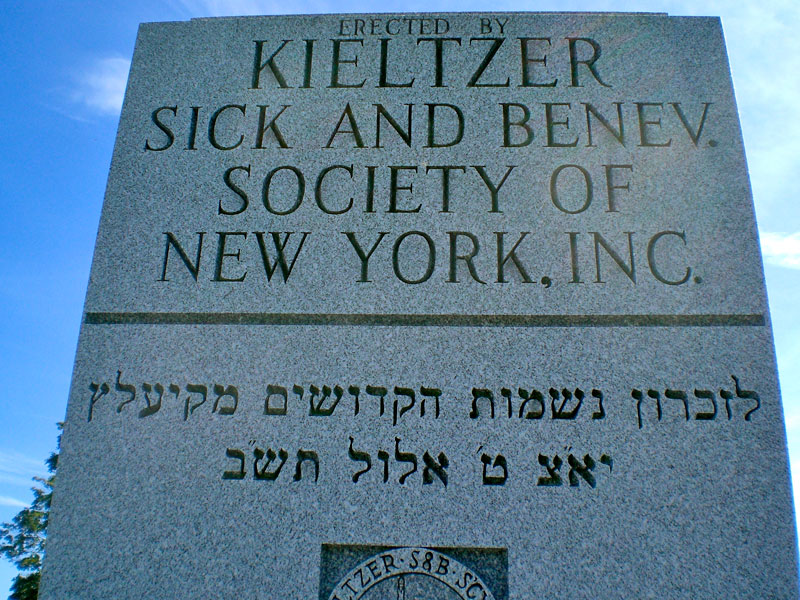
Pinelawn, New York
Section 6, Block 10
Society established January 7, 1905.
The memorial was erected in September 1957
The Kieltzer Society of N.Y. has some most striking and poignant monuments residing at its large burial plot in the New Montefiore Cemetery in Pinelawn, New York. Upon walking through its portals , one immediately sees the tall monument erected in 1957 by the Kieltzer Society . It memorializes 28,000 Jewish martyrs who were killed in Kielce, Poland within the span of a week (August 20th – 28th, 1942).
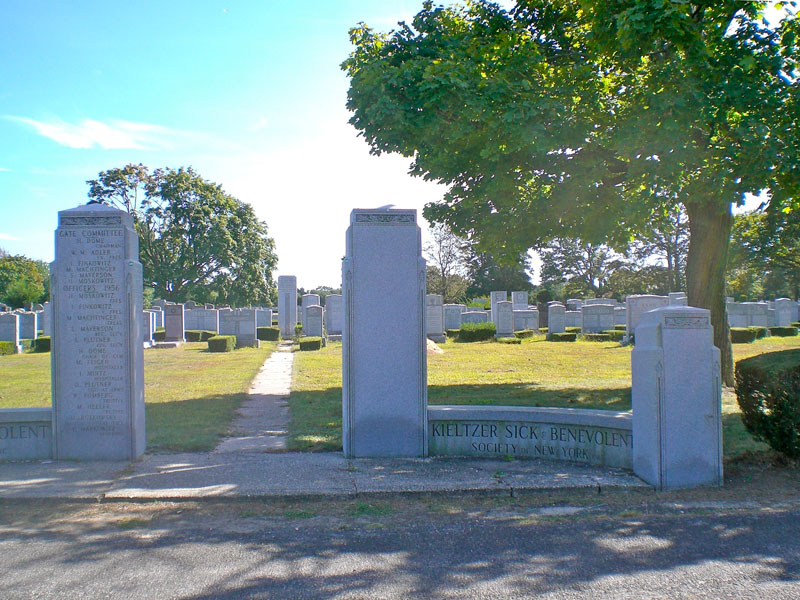
On one side of this monument is an inscription referring to the survivors of the Nazi death camps who returned to Kielce upon liberation, only to be brutally murdered by their former neighbors on July 4, 1946 — one and a half years after liberation.
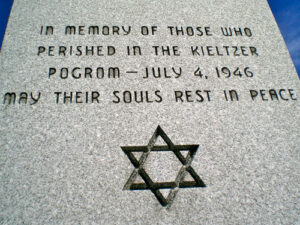
At one corner of the Kieltzer plot is the most chilling monument one can imagine. This monument, erected by the Kieltzer Society of New York is dedicated to the last 45 Jewish children who were brutally murdered by the Nazis at the Jewish cemetery in Kielce on one day (May 23, 1943). The ages of the children range from 15 months to 13 years and are inscribed on the right side of the monument.
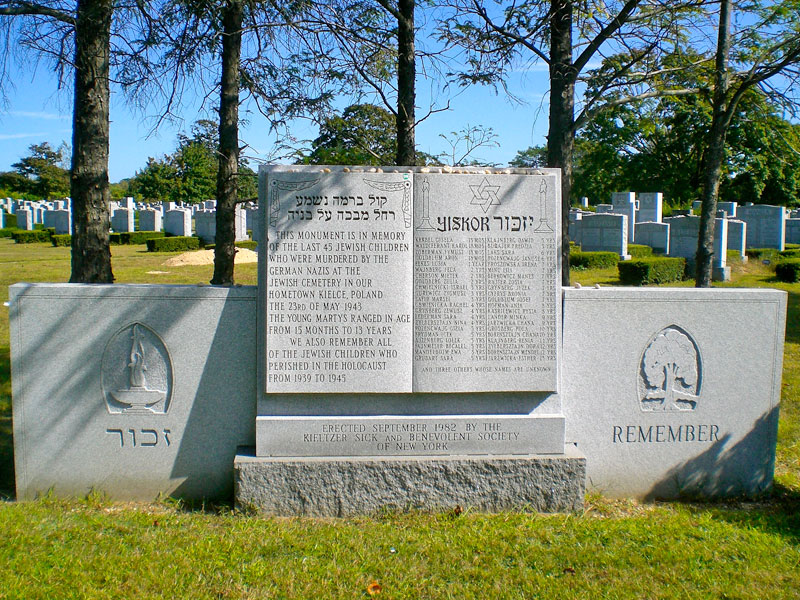
This monument also memorializes the one and a half million Jewish children who were killed during the Holocaust.
The inscription in the cold marble will forever send horrifying chills to all who pass by and are drawn in by the large word “Zachor” — remember — etched deeply into the marble.
THIS MONUMENT IS IN MEMORY
OF THE LAST 45 JEWISH CHILDREN
WHO WERE MURDERED BY THE
GERMAN NAZIS AT THE
JEWISH CEMETARY IN OUR
HOMETOWN KIELCE, POLAND
THE 23RD OF MAY 1943.
THE YOUNG MARTYRS RANGED IN AGE
FROM 15 MONTHS TO 13 YEARS
WE ALSO REMEMBER ALL
OF THE JEWISH CHILDREN WHO
PERISHED IN THE HOLOCAUST
FROM 1939 TO 1945.
The names and ages of the martyred children
Beth David Cemetery
The Kieltzer Society of N.Y. has similar portals at its burial plot at Beth David Cemetery in Elmont, N.Y.
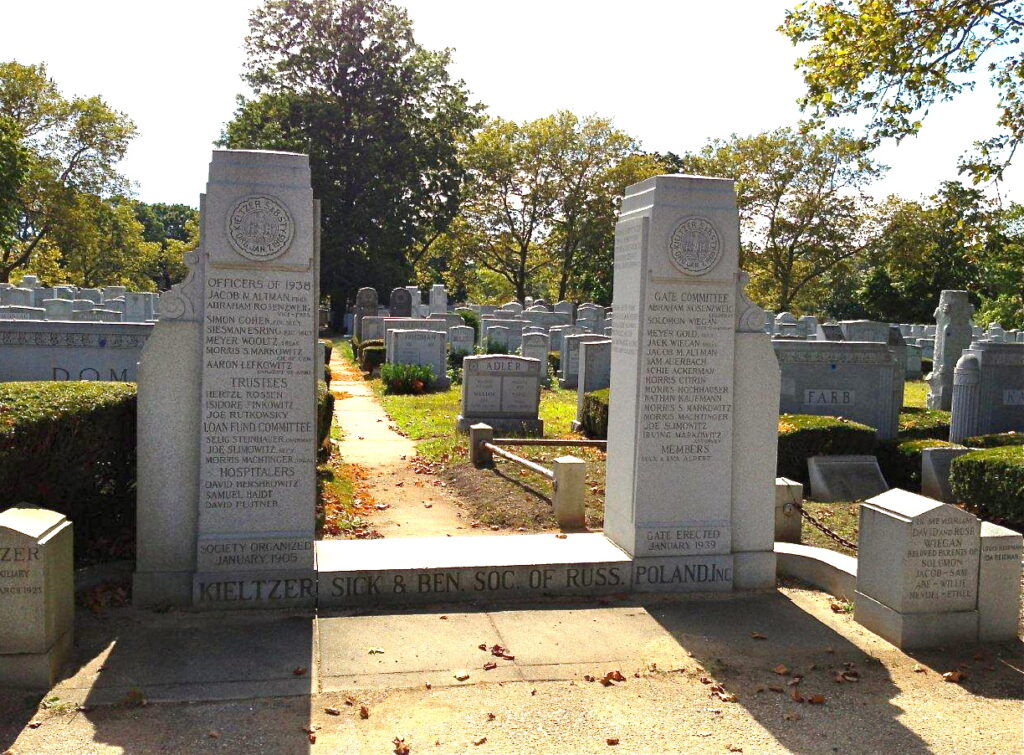
Renovation of the monument for the victims of the Kielce Pogrom
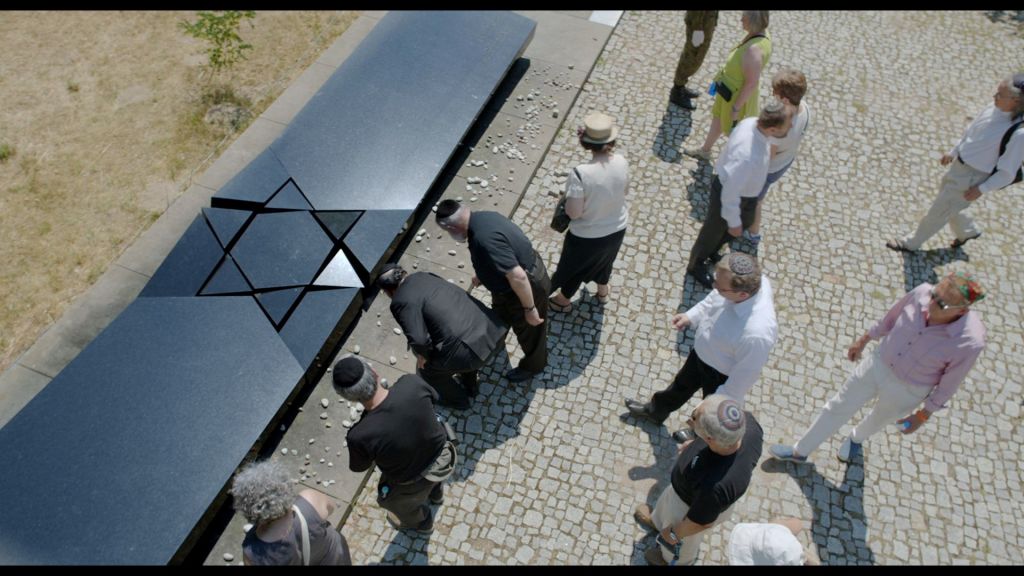
The Kielce Jewish Community in Israel and the Jan Karski Organization in Poland, in a joint initiative, renovated the monument of the pogrom victims’ and the 43 children’s gravestone in Kielce’s Jewish cemetery. The project also involved the municipality of Kielce, and Rabbi Michael Schudrich – Chief Rabbi of Poland.
The new monument was designed by Marek Cecula, an internationally recognized Israeli artist who was born in Kielce. The monument was publicly unveiled in a ceremony on July 4, 2010 (64th anniversary of the Pogrom).
The monument represents the shattered dreams of the pogrom victims to immigrate to the state of Israel, and the feelings and state of mind among the Jewish people and survivors who came back to Kielce after the Holocaust in order to continue their lives.
On its right section, the monument displays the names of the pogrom victims in Hebrew.
On its left section, the story of the pogrom is translated into four languages. The middle section of the monument is composed of black granite stone with a Star of David, representing the shock and impact of the pogrom on the Jewish people.
An appropriate biblical verse is printed below the granite stone. In addition, a natural stone from the mountains of Jerusalem has been placed on the monument to represent the victims’ desire to reach the state of Israel and start new lives. The stone on the monument also represents the Jewish tradition of placing a stone when visiting a grave as a sign of sorrow.
Students from Poland and Israel record gravestones in the Jewish cemetery in Kielce
Descendents of the Jewish community of Kielce Jews are now more able to identify the graves of their forefathers. This data collection will also help Poles who are starting to discover their Jewish roots.
The initiative in Kielce has been undertaken by PIYE participants (Polish Intercultural Youth Encounters). PIYE is an educational program run by the Museum of the History of Polish Jews.
Some of the old Matzevot (tombstones) were found and identified. There are also photos of the inside of the only surviving shtiebl (house of prayer) in Kielce and the only surviving wall paintings. These sole artifacts will be preserved through the efforts undertaken by the Jan Karski Society.For more information on the plans to move this rare, surviving private prayer house in Kielce to the Jewish cemetery.
Menorah 2007
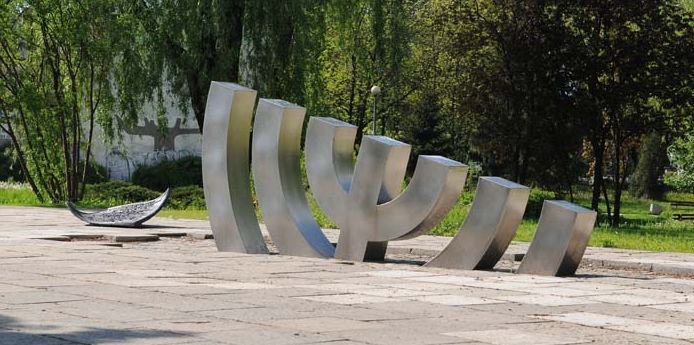
Public artwork commissioned by the city of Kielce, Poland to commemorate the liquidation of the Kielce’s ghetto and the murder of 20.000 deported Jews.
The Menorah, designed by Marek Cecula, is a site-specific work constructed from stainless steel and it represents an iconic symbol of Jewish faith, raising / sinking from authentic cobblestone collected from a street of the old ghetto. There was a center of Kielce’s ghetto in the spot on which Menorah was placed, now it is a busy city street.
